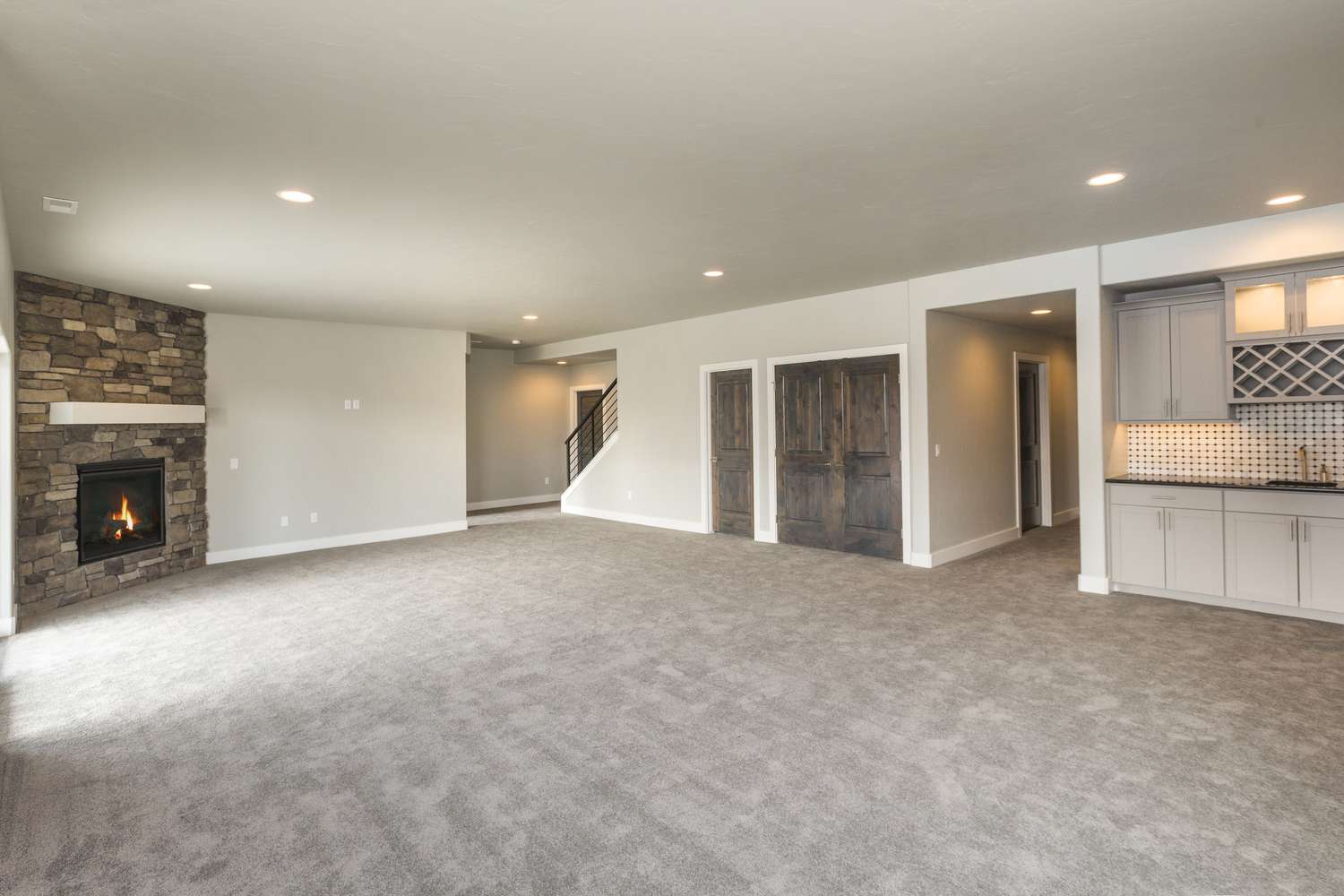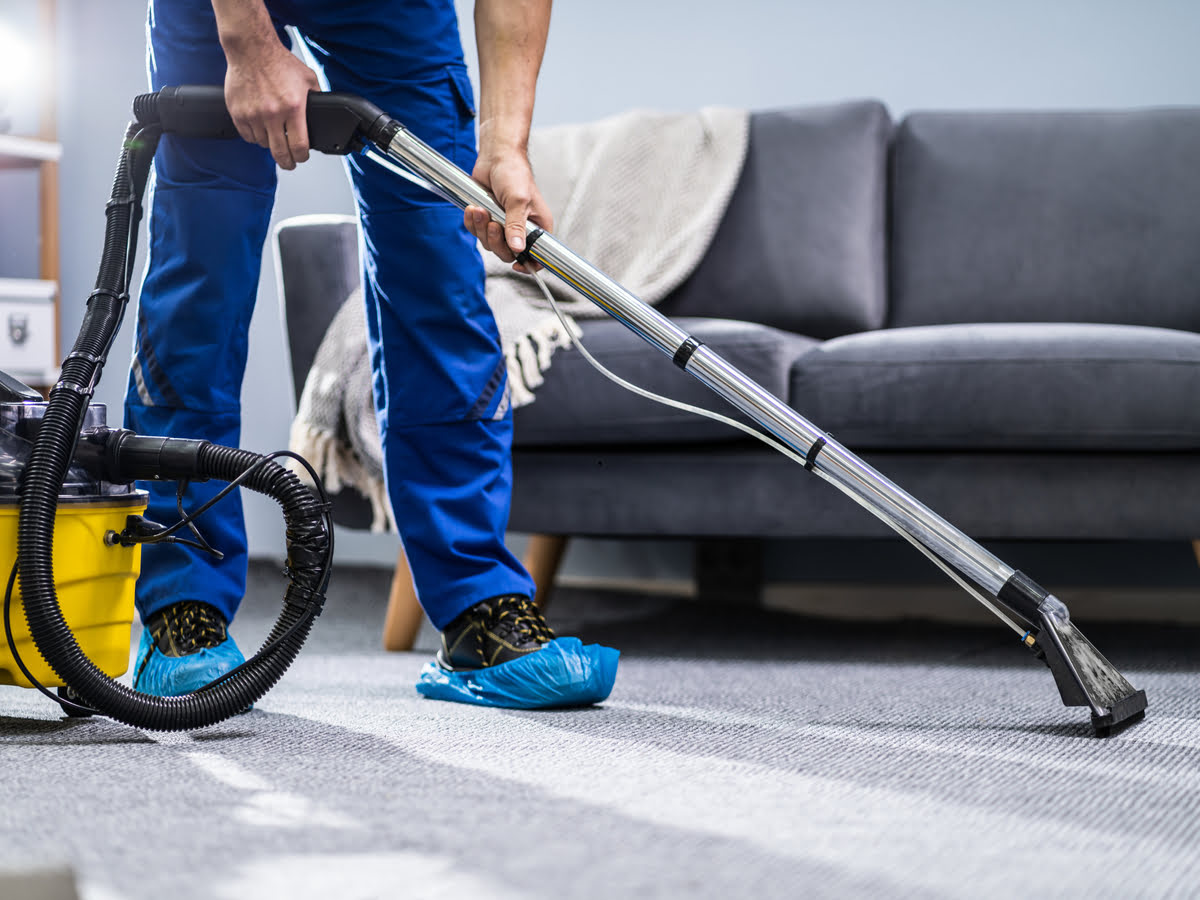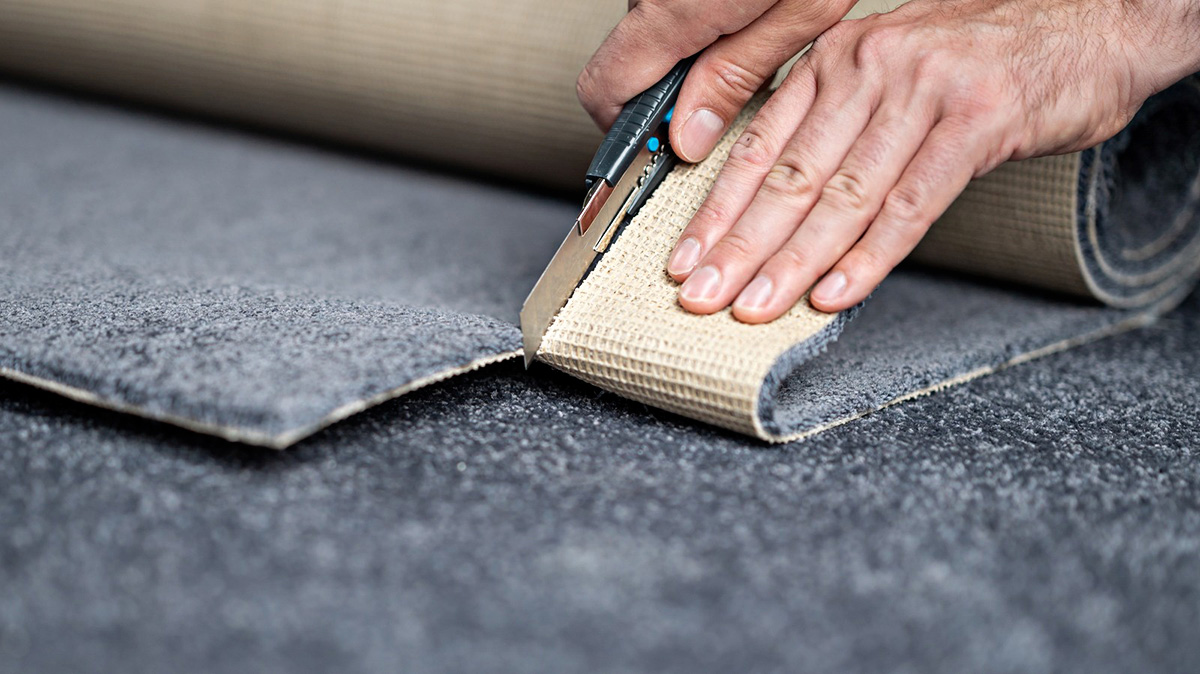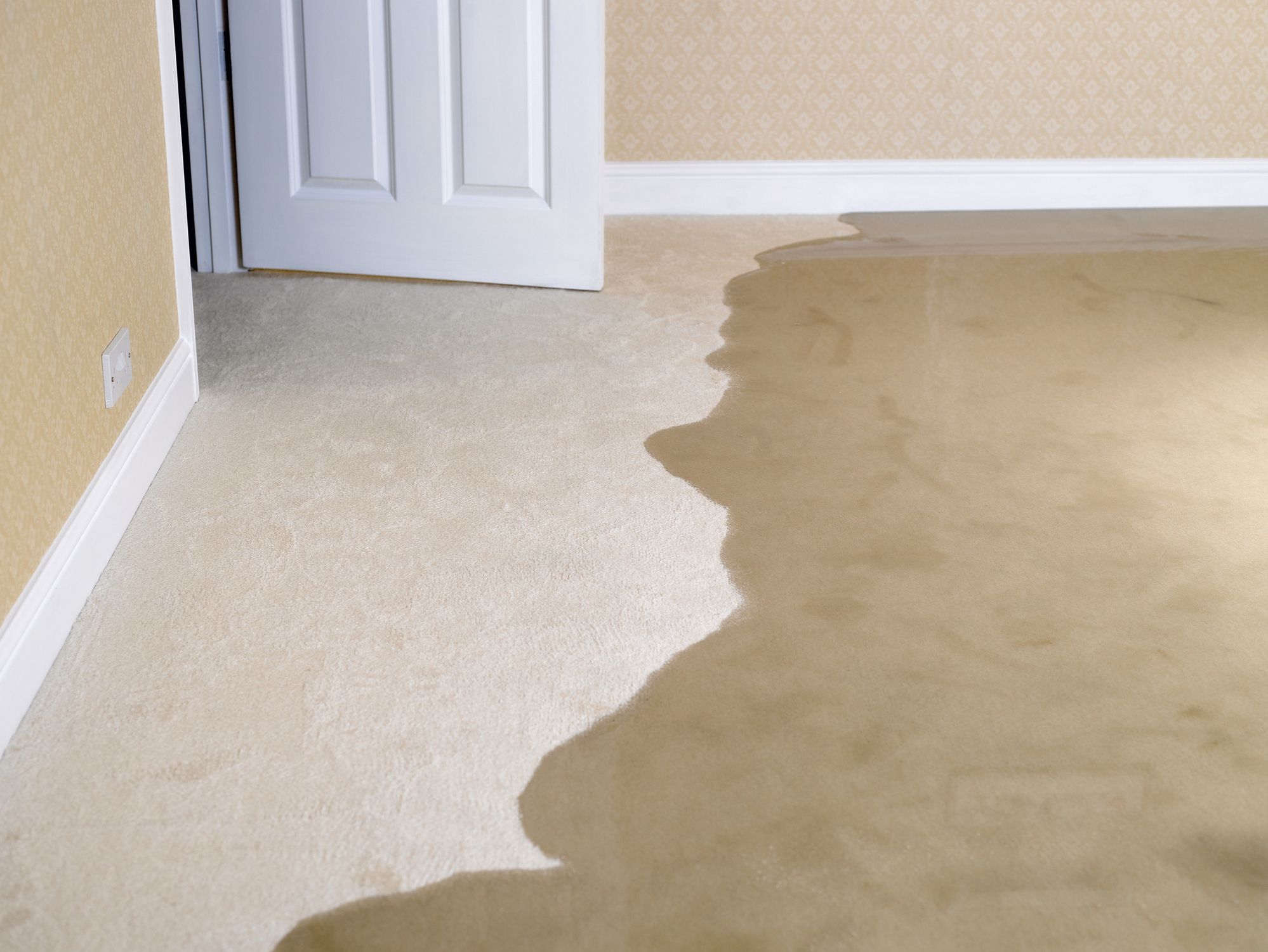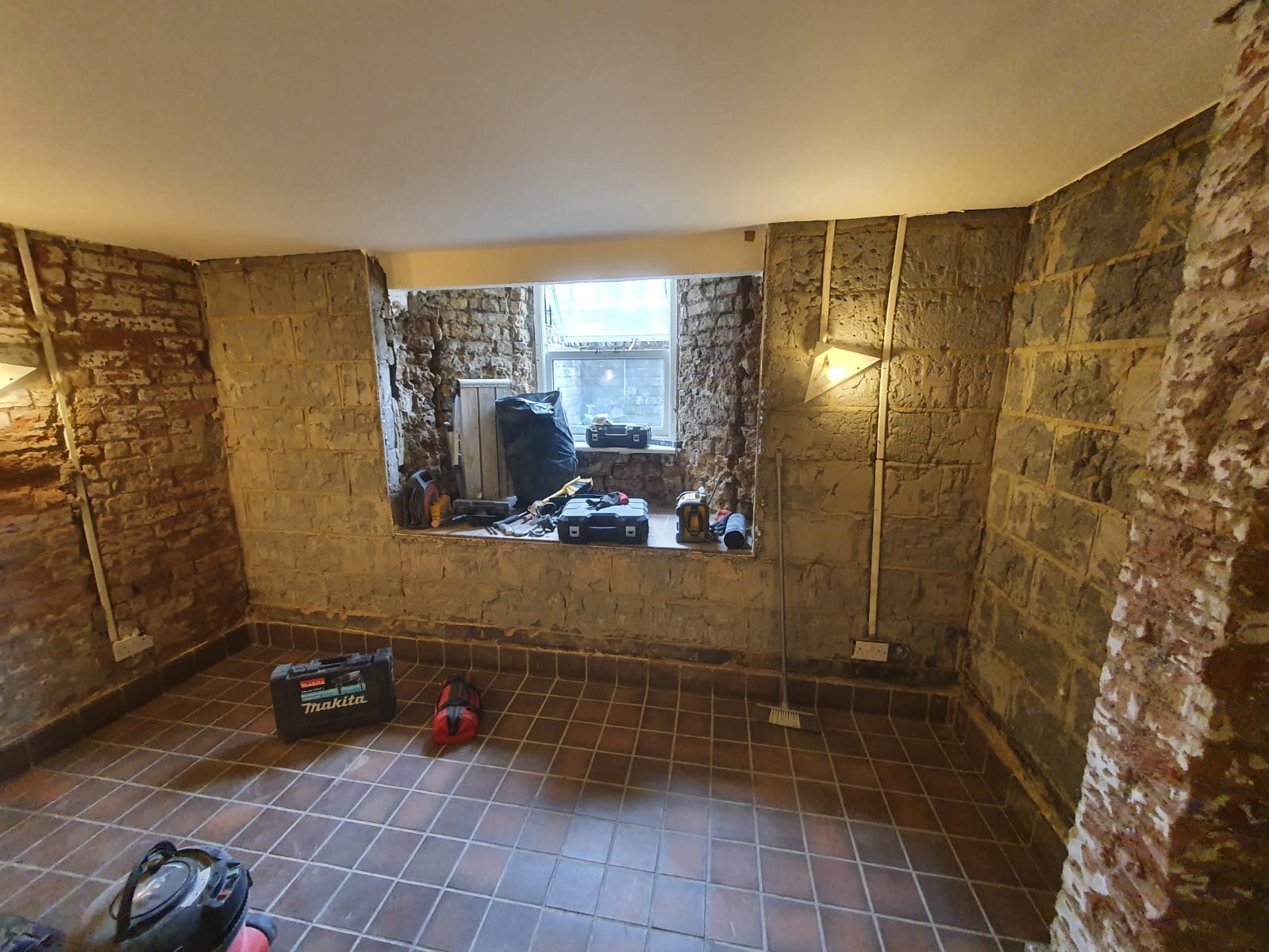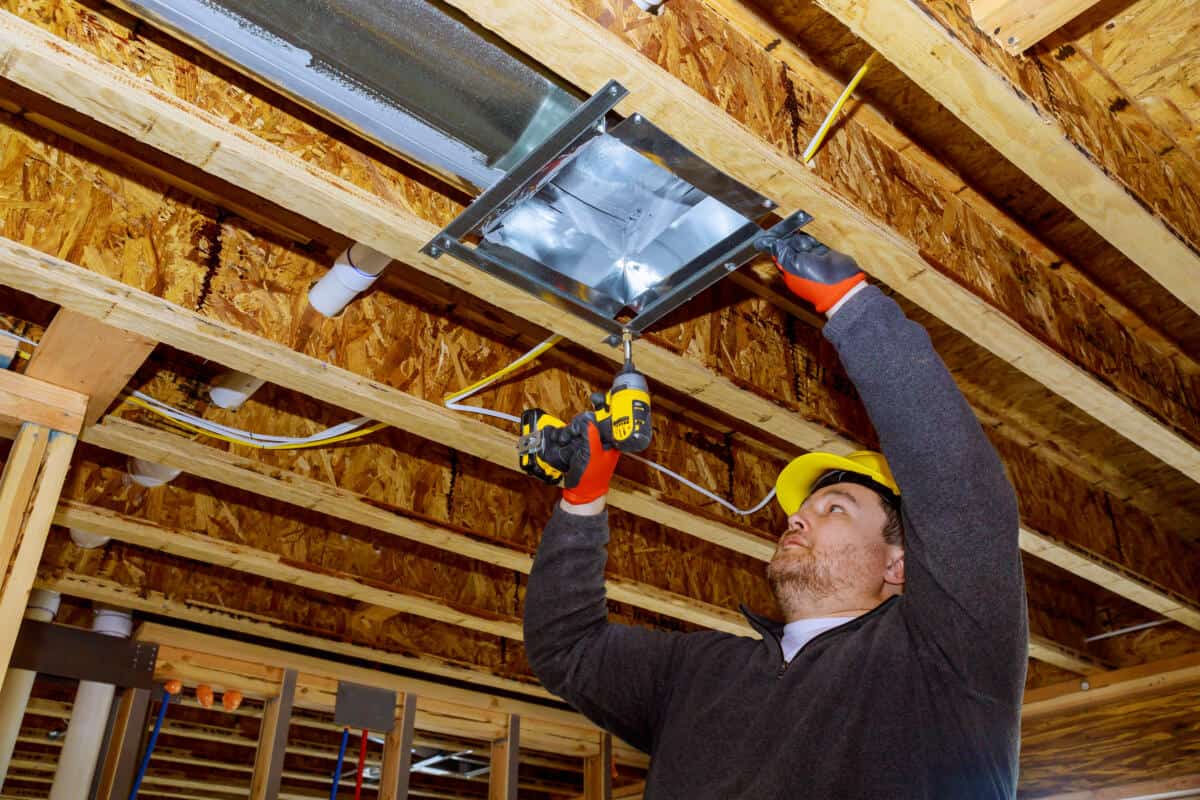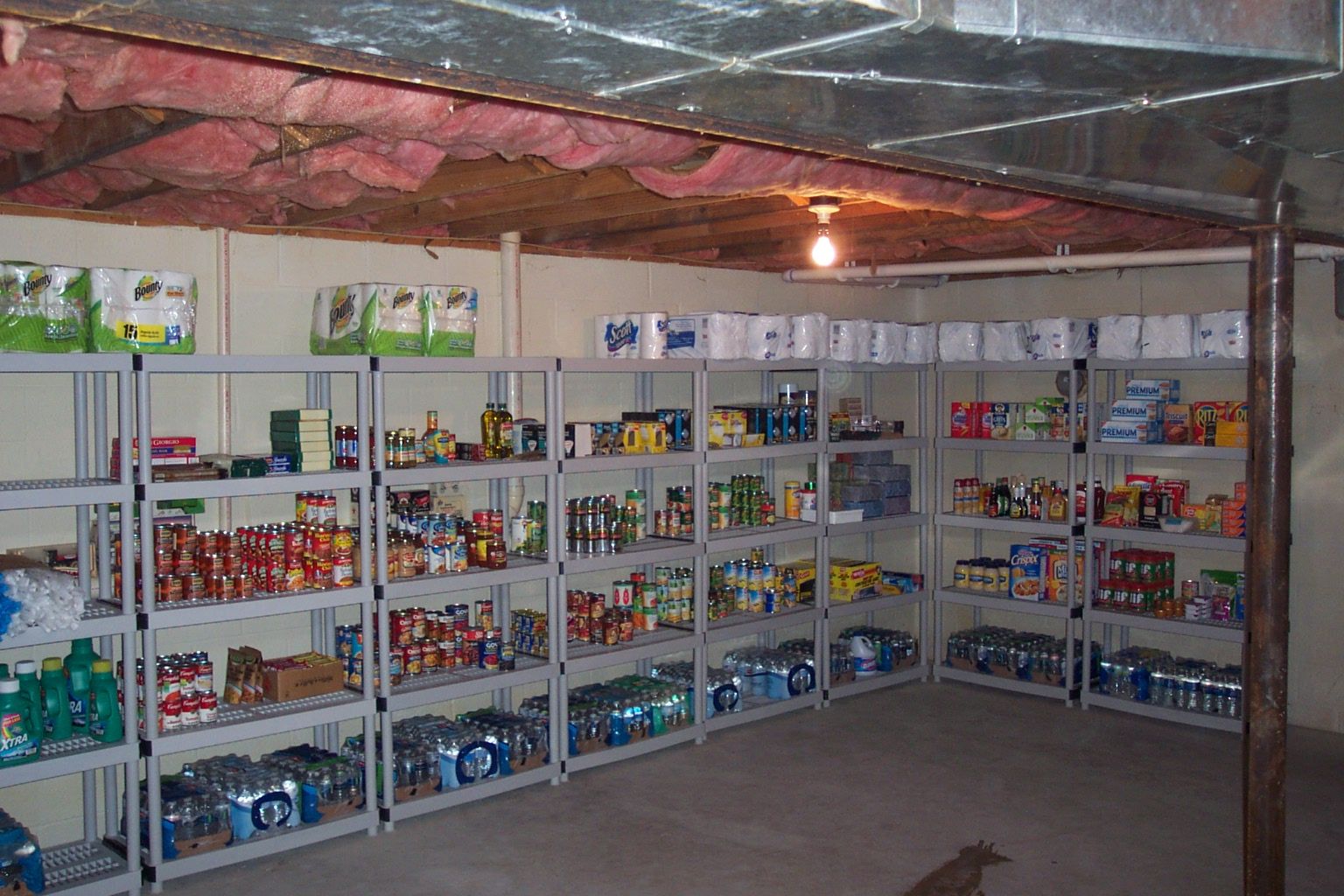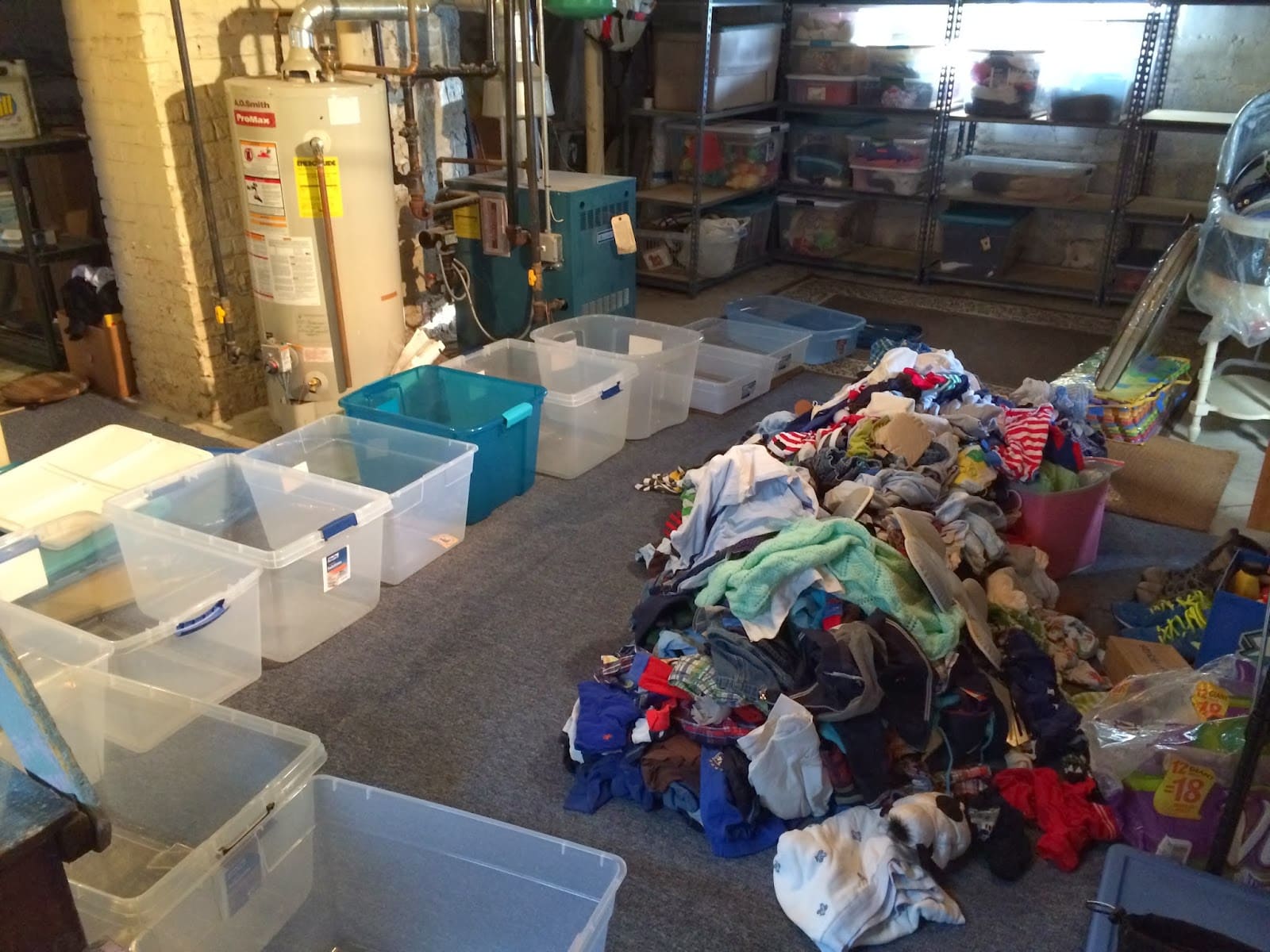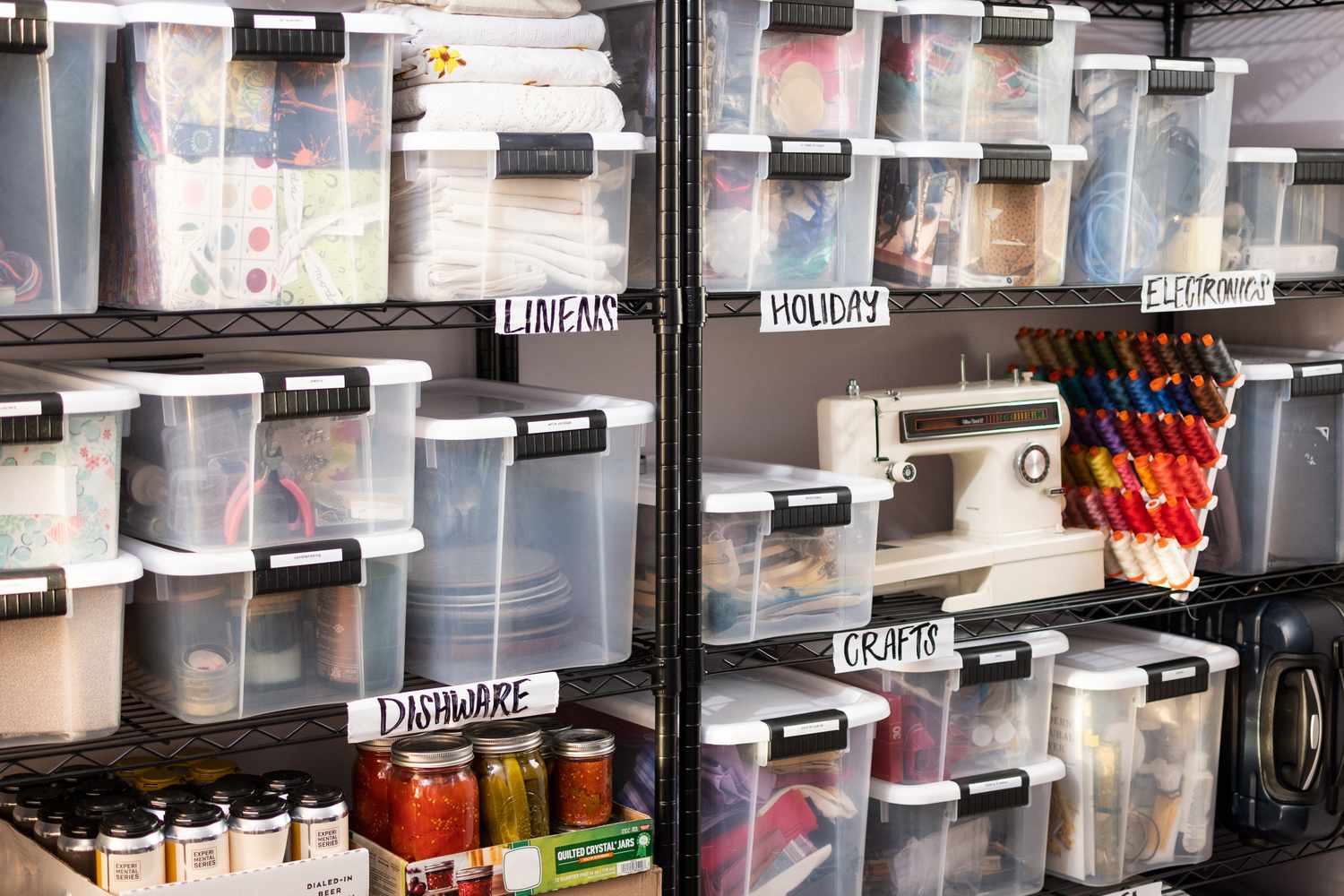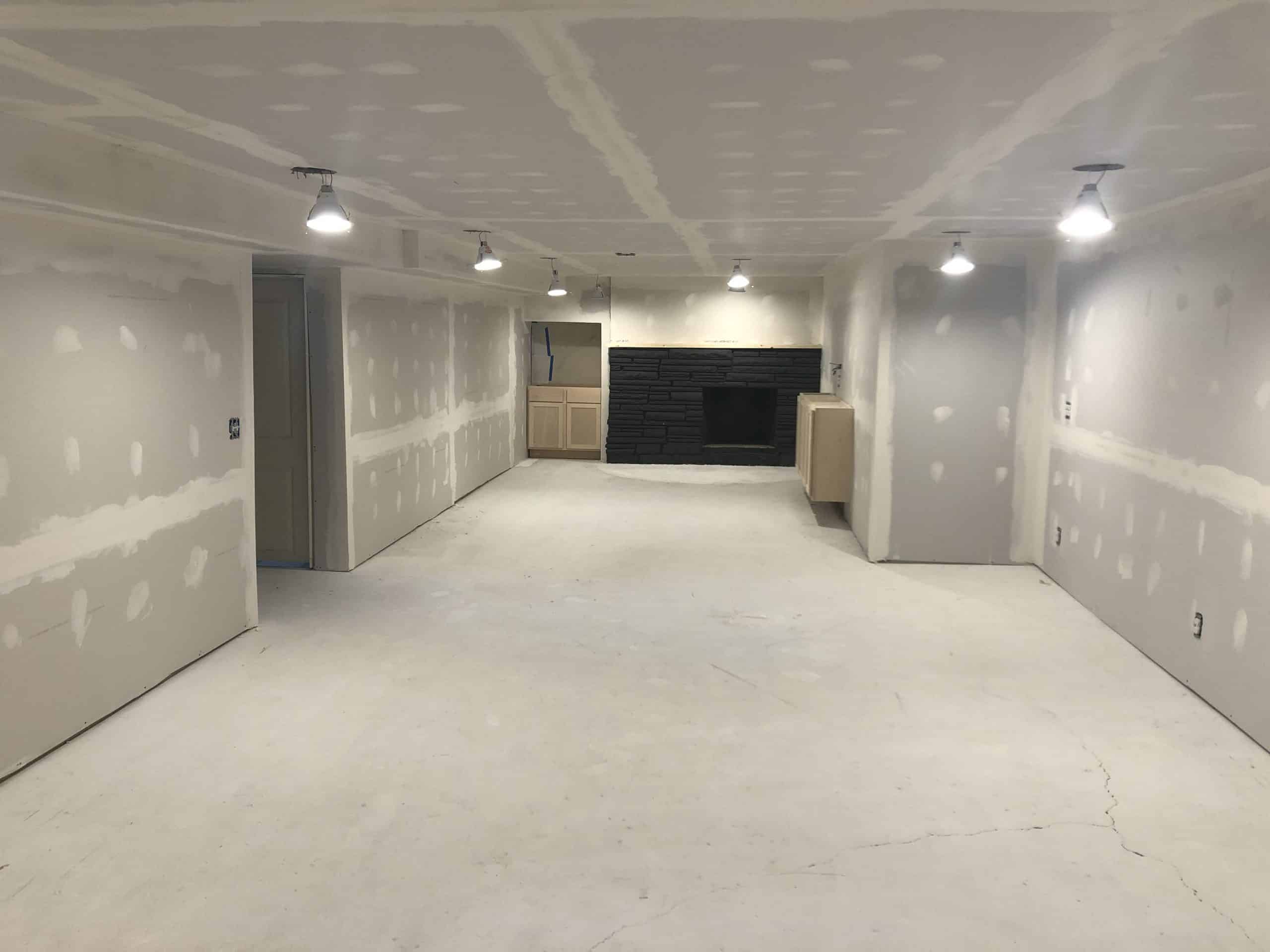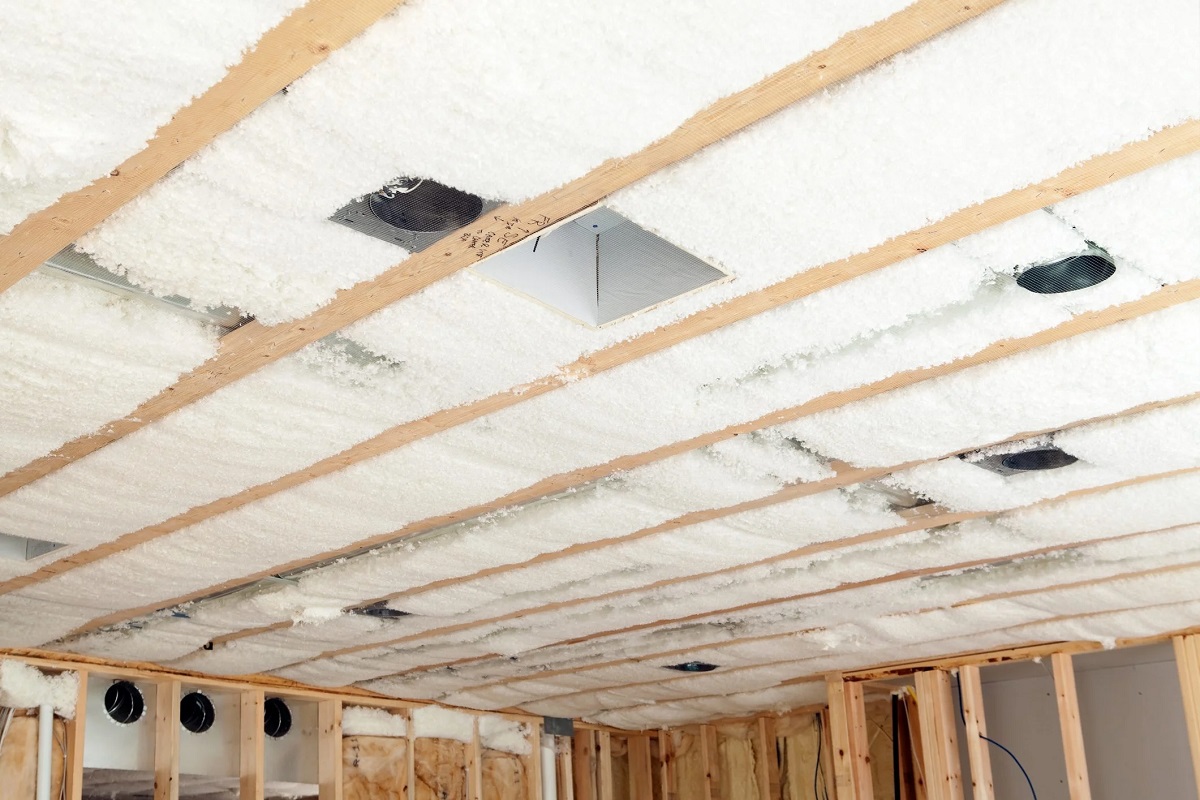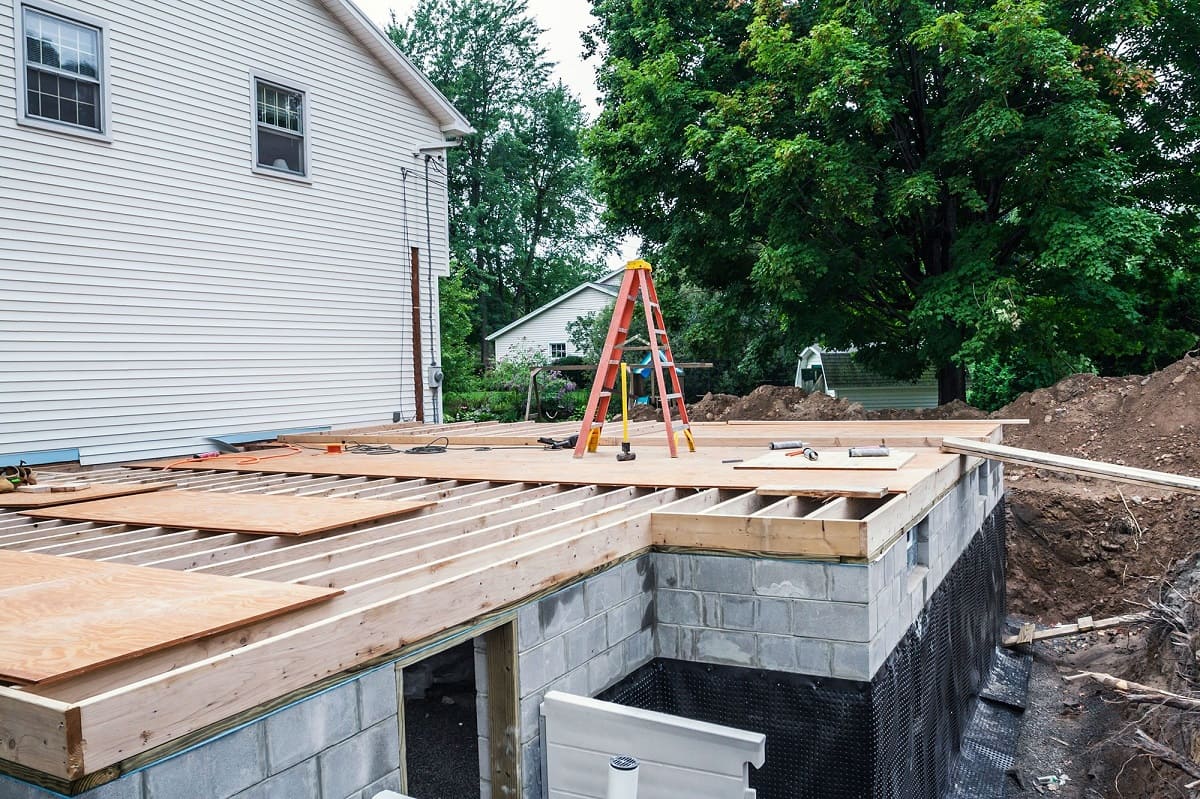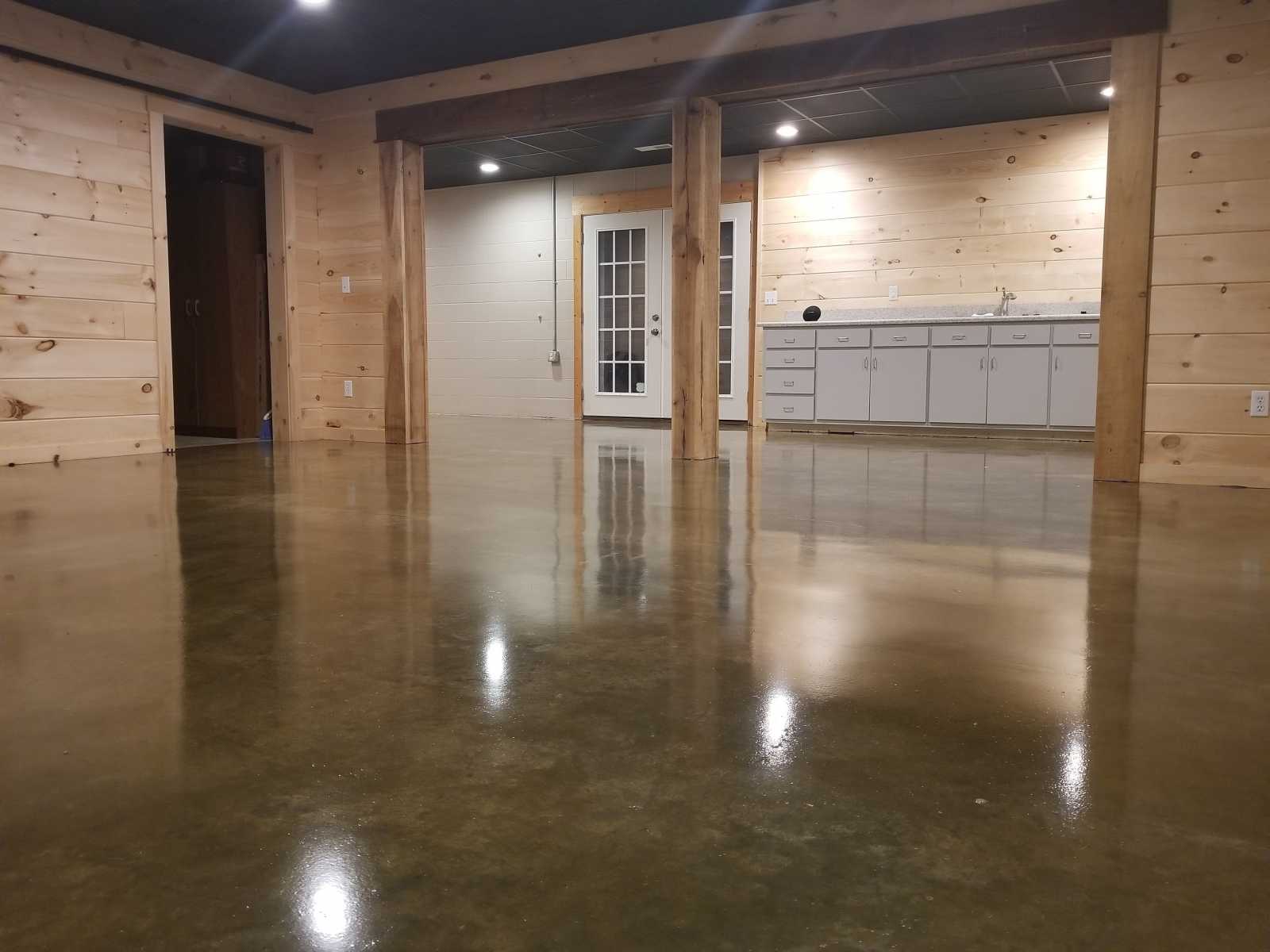

Articles
How To Carpet A Basement
Modified: January 24, 2024
Learn the steps and techniques for carpeting your basement with this comprehensive guide. Find helpful articles and tips to transform your basement into a cozy and inviting space.
(Many of the links in this article redirect to a specific reviewed product. Your purchase of these products through affiliate links helps to generate commission for Storables.com, at no extra cost. Learn more)
Introduction
Carpeting a basement can be a great way to transform the space into a cozy and inviting area that is perfect for lounging, entertaining, or even setting up a home office. While basements are often associated with cold, damp, and unfinished environments, adding carpet can instantly create a warm and comfortable atmosphere.
Before diving into the process of carpeting your basement, it’s important to note that not all basements are suitable for carpet installation. Basements prone to moisture issues, such as excessive humidity or water seepage, may not be suitable for carpeting. It’s crucial to address any existing moisture problems and ensure that your basement is properly waterproofed before proceeding with carpet installation.
Assuming that your basement is dry and ready for carpet, this article will guide you through the process of carpeting your basement from start to finish. We will cover everything from preparing the space and selecting the right carpet to measuring, installing, and finishing touches.
By the end of this article, you’ll have a clear understanding of the steps involved and be well-equipped to tackle the project of carpeting your basement, turning it into a functional and comfortable space that you can enjoy for years to come.
Key Takeaways:
- Properly preparing the basement and choosing moisture-resistant, durable carpet and padding are essential for a successful basement carpeting project. This ensures a cozy, long-lasting, and visually appealing space for years to come.
- Attention to detail during installation, including stretching and securing the carpet, trimming edges, and completing finishing touches, is crucial for a professional and polished look. Diligent maintenance and prompt addressing of any issues will help preserve the integrity and beauty of the basement carpet.
Read more: How To Put Carpet In Basement
Preparing the Basement
Before you begin the process of carpeting your basement, it’s essential to properly prepare the space. This involves clearing out any furniture, appliances, and other items that may be in the way. It’s important to have a clean and empty canvas to work with.
Next, take the time to inspect the basement for any signs of moisture or water damage. Look for any cracks in the walls or floors, and if you spot any, it’s crucial to address them before proceeding with carpet installation. Water seepage can damage the carpet and lead to mold and mildew growth, so it’s essential to ensure a dry and stable environment.
If your basement has a concrete floor, it’s a good idea to thoroughly clean it to remove any dust, debris, or grease. Use a broom, mop, or vacuum cleaner to get rid of any dirt and make sure the surface is smooth and free of any imperfections. If there are any stubborn stains, consider using a concrete cleaner or degreaser to remove them.
In some cases, your basement may already have an existing flooring material, such as vinyl or laminate. If this is the case, you’ll need to remove it before proceeding with carpet installation. Use a scraper or floor stripper to remove the old flooring, being careful not to damage the subfloor.
Another crucial step in preparing the basement is to address any potential moisture issues. Basements are notorious for being damp and humid, so it’s important to take measures to prevent moisture from seeping into your carpet. Consider applying a suitable moisture barrier, such as a waterproofing sealant or a moisture-resistant underlayment, to help create a barrier between the concrete floor and the carpet.
Lastly, ensure that the basement is well-ventilated. Proper airflow will help prevent excess moisture buildup and keep the environment dry. If your basement lacks sufficient ventilation, consider installing vents or a dehumidifier to maintain optimal humidity levels.
By taking the time to properly prepare your basement, you’ll set a solid foundation for successful carpet installation. With a clean, dry, and well-prepared space, you can move forward with confidence to the next steps of the process.
Choosing the Right Carpet
When it comes to carpeting your basement, selecting the right type of carpet is crucial. Basements are typically considered high-moisture areas, so it’s important to choose a carpet that is specifically designed to withstand these conditions.
One of the most important factors to consider is the carpet’s resistance to mold, mildew, and moisture. Look for carpets that are made from synthetic materials such as nylon or polyester, as they are more resistant to water damage and less prone to mold and mildew growth. Avoid natural fiber carpets like wool, as they can absorb moisture and develop mold or odor issues in a basement environment.
In addition to moisture resistance, durability is another key consideration. Basements can be high-traffic areas, so opt for a carpet with a high-quality construction and a high-density rating, as these factors contribute to its ability to withstand wear and tear. Berber or loop pile carpets are known for their durability, making them a popular choice for basement carpeting.
Considering the potential for spills and accidents in the basement, it’s also important to choose a carpet that is stain-resistant. Look for carpets with built-in stain protection technologies, such as stain-resistant treatments or carpets with anti-soil and soil-release properties. This will make cleaning up spills and stains much easier and help prolong the lifespan of your carpet.
When it comes to carpet color, consider the overall design and function of your basement. Lighter colors can make the space feel larger and brighter, while darker colors can add a cozy and intimate atmosphere. Neutral colors are a safe choice as they can easily blend with various design styles and are less likely to show dirt and stains.
Finally, don’t forget about comfort underfoot. Basements often have a hard concrete floor, so choosing a carpet with a thicker pile or adding a high-quality carpet padding can provide additional cushioning and insulation.
Take the time to visit carpet stores or browse online to explore different options and consult with professionals who can guide you in choosing the right carpet for your basement. Don’t be afraid to ask for samples or swatches to see how the carpet will look in your space. Consider your budget, personal preferences, and the specific needs of your basement to make an informed decision.
Choosing the right carpet is a crucial step in ensuring the longevity and functionality of your basement flooring. By selecting a carpet that is moisture-resistant, durable, stain-resistant, and comfortable, you’ll create a warm and inviting atmosphere in your basement that can withstand the test of time.
Measuring and Buying Carpet
Once you have chosen the right carpet for your basement, the next step is to accurately measure the space and determine how much carpet you will need. Proper measurements are crucial to ensure that you purchase the correct amount of carpet and minimize waste.
Start by measuring the length and width of the basement. Use a measuring tape and measure the longest wall first, and then measure the perpendicular wall. Repeat this process for any additional rooms or areas within the basement. It’s important to measure the rooms separately and then add up the total square footage to determine the amount of carpet needed.
When measuring, be sure to account for any areas where you do not plan to install carpet, such as doorways, closets, or built-in furniture. Subtract the square footage of these areas from your total measurements to get the accurate carpet requirement.
Consider adding 5-10% to the total square footage to account for any potential mistakes, cutting waste, or future repairs. It’s always better to have a little extra carpet on hand than to run short during installation.
With your measurements in hand, it’s time to start shopping for carpet. You have the option to visit local carpet stores or explore online retailers. Look for reputable suppliers that offer a wide selection of basement-friendly carpets.
When buying carpet, it’s essential to consider the customer reviews, warranties, and return policies. Look for carpets that come with moisture-resistant or waterproof backing for added protection in the basement environment. You can also seek advice from the carpet supplier or a professional installer to ensure you make the right choice.
Once you have decided on the carpet style, color, and quantity, place your order and schedule the delivery. Ensure that the carpet delivery date aligns with your installation timeline to avoid any delays.
Additionally, consider purchasing carpet padding. Carpet padding provides cushioning, insulation, and helps extend the lifespan of your carpet. Look for padding specifically designed for basement use, as it should have moisture-resistant properties. The amount of padding you’ll need depends on the thickness and density of the carpet you’ve chosen.
By carefully measuring your basement and purchasing the right amount of carpet and padding, you’ll be well-prepared for the installation process. Take your time and select reputable suppliers to ensure that you receive high-quality materials that are suitable for your basement.
Preparing the Subfloor
Before installing the carpet in your basement, it’s important to properly prepare the subfloor to ensure a smooth and stable surface for your carpet. The subfloor refers to the layer of material that lies beneath the carpet and provides support and stability.
If your basement has a concrete subfloor, it’s crucial to assess its condition and address any issues that may affect the installation. Start by thoroughly cleaning the subfloor to remove any dust, debris, or adhesive residue from previous flooring materials.
If you notice any cracks or uneven areas on the concrete subfloor, it’s important to fill and level them. Use a suitable concrete filler or patching compound to fill any cracks and then smooth it out with a trowel. Allow the filler to dry completely before proceeding.
Next, check the subfloor for any raised nail heads, screws, or other protrusions. These could cause the carpet to wear unevenly and may lead to damage over time. Use a hammer or screwdriver to gently tap down any raised nails or screws and ensure that the subfloor is smooth and free of any obstructions.
In some cases, it may be necessary to install a plywood subfloor over the concrete subfloor. This is particularly important if the concrete is uneven or has moisture issues. Use pressure-treated plywood and install it according to manufacturer instructions, ensuring that the edges are properly aligned and secured to the concrete subfloor.
Once the subfloor is clean, level, and free of any imperfections, it’s recommended to apply a primer or sealer to the concrete. This will help improve the adhesion of the carpet adhesive and create a barrier between the concrete and carpet, preventing any potential moisture absorption.
Applying the primer or sealer is a straightforward process. Simply follow the manufacturer’s instructions, which will typically involve applying the product with a roller or brush and allowing it to dry completely before proceeding with carpet installation.
It’s important to note that if your basement has an existing plywood subfloor, it’s crucial to check for any signs of damage, such as rot or water damage. Replace any damaged sections of plywood to ensure a solid and sturdy subfloor for your carpet.
By properly preparing the subfloor, you’ll create the ideal foundation for your carpet installation. Whether you’re working with a concrete subfloor or installing a plywood subfloor, taking the time to clean, level, and prime the surface will ensure a long-lasting and high-quality carpet installation in your basement.
Read more: How To Install Carpet In A Basement
Installing Carpet Padding
Installing carpet padding is an important step in the process of carpeting your basement. Carpet padding, also known as underlay, provides cushioning, insulation, and support to enhance the comfort and longevity of your carpet.
Before installing the padding, ensure that the subfloor is clean, dry and free from any debris. The padding should be installed directly on the subfloor, providing a buffer between the carpet and the subfloor.
Start by measuring the length and width of the room to determine the size of padding needed. It’s important to choose padding that is specifically designed for basement use, as it should have moisture-resistant properties. This will help prevent any potential moisture from seeping into the carpet and causing damage.
Lay the padding material flat on the subfloor, ensuring that it reaches the edges of the room. Trim any excess padding as needed. It’s crucial to have a snug and secure fit without any overlapping or gaps.
Once the padding is in place, secure it to the subfloor using a staple gun or double-sided bonding tape. Start in one corner of the room and work your way across, ensuring that the padding is secure and flat. Avoid stretching or pulling the padding too tightly, as this can cause wrinkles or bulges in the carpet.
When installing padding in multiple rooms or areas, be sure to butt the padding together tightly without overlapping. This will create a seamless transition between the rooms and prevent any unevenness under the carpet.
Take the time to check the entire area and make sure that the padding is properly secured and in place. Walk around the room and ensure that there are no loose sections or areas that need adjustment.
Installing high-quality padding will not only enhance the overall comfort of your carpet but also provide insulation and increase the carpet’s lifespan. The padding acts as a shock absorber, reducing wear and tear on the carpet fibers and preventing them from being crushed by heavy foot traffic.
Remember that different carpet types and thicknesses may require specific types of padding. Consult with the carpet manufacturer or a professional installer to ensure that you choose the right padding for your specific carpet type and basement environment.
By installing carpet padding in your basement, you’ll create a more comfortable and durable flooring surface. The padding will provide an extra layer of cushioning and insulation, allowing you to enjoy your basement space to the fullest.
Before carpeting a basement, make sure to address any moisture issues by sealing the concrete floor and installing a vapor barrier. This will help prevent mold and mildew from forming under the carpet.
Installing the Carpet
After properly preparing the basement and installing the carpet padding, it’s time to move on to the exciting part: installing the carpet itself. This process requires careful planning, precise measurements, and attention to detail to ensure a seamless and professional-looking installation.
Start by unrolling the carpet in a well-ventilated area and allow it to relax and acclimate to the room’s temperature and humidity for at least 24 hours. This step is essential to prevent any potential stretching or shrinking of the carpet once it’s installed.
Next, gather your installation tools, including a carpet knife, knee kicker, power stretcher, seam iron, and carpet adhesive or double-sided tape. Ensure that you have all the necessary materials handy before starting the installation.
Begin the installation process by laying out the carpet along one wall of the room, allowing an extra few inches of carpet to overlap the walls. This excess will be trimmed later to ensure a precise fit.
Using a knee kicker, stretch and secure the carpet against the opposite wall. Start in the center and work your way out, making sure to eliminate any wrinkles or bubbles as you go. The knee kicker is used to stretch the carpet and hook it onto the tack strips along the perimeter of the room.
Once the carpet is stretched and secured on one side, use a power stretcher to stretch and secure the carpet on the other side of the room. This step is essential for creating a smooth and taut appearance. Be cautious not to overstretch the carpet, as this can lead to damage or buckling in the future.
As you continue stretching and securing the carpet, ensure that the carpet’s pile or texture runs in the same direction throughout the room. This will create a consistent and visually appealing finish.
For rooms with multiple seams or areas that require cutting, use a carpet knife and straight edge to trim the carpet to the desired shape and size. Take your time and ensure that the cuts are clean and precise.
As you approach doorways or other obstacles, cut the carpet to fit around these areas. Use a seam iron and adhesive to join the carpet pieces together, following the manufacturer’s instructions. Alternatively, you can use double-sided carpet tape for a quick and easy installation.
Once the carpet is properly installed, go around the room and trim any excess carpet along the walls using a carpet knife. Be careful not to cut into the baseboards or trim.
Lastly, use a carpet trimmer to tuck and secure the edges of the carpet beneath the baseboards or trim. This will provide a clean and finished appearance.
It’s important to note that if you’re not confident in your carpet installation skills, hiring a professional installer is always a viable option. They have the expertise and tools to ensure a flawless and professional-looking carpet installation.
By following the proper techniques and taking your time, you can achieve a beautiful and long-lasting carpet installation in your basement. Enjoy the transformation and revel in the comfort and coziness that your new carpeted space brings.
Stretching and Securing the Carpet
Stretching and securing the carpet is a critical step in the installation process that ensures a smooth, wrinkle-free, and professional-looking finish. Properly stretched and secured carpet will not only enhance the appearance of your basement but also improve the longevity and durability of the carpet itself.
To begin, gather the necessary tools, including a knee kicker, power stretcher, and carpet knife. These tools will help you achieve the right amount of tension and ensure a secure installation.
Start by positioning the carpet along one wall of the room, allowing a few inches of excess carpet to overlap the walls. This excess will be trimmed later for a precise fit. Make sure the carpet is centered and straight before proceeding.
Using a knee kicker, which is a tool with padding and teeth, position the knee kicker about six inches away from the wall, with your knee firmly pressing on the padded end. Kick firmly and smoothly with your knee to stretch the carpet against the opposite wall. Repeat this process every six to eight inches along the entire length of the wall. This ensures that the carpet is properly tensioned and eliminates any wrinkles or bubbles.
Next, use a power stretcher, a tool with a long handle and teeth, to further stretch and secure the carpet. Start in the center of the room and position the power stretcher about six inches away from the wall opposite the one you started with. Push down on the handle to engage the teeth into the carpet, then push the lever downward, applying pressure to stretch the carpet. Repeat this process in various locations across the room, working your way towards the opposite wall. Make sure you maintain equal tension throughout the stretching process.
As you stretch the carpet, secure it to the tack strips along the perimeter of the room. The tack strips have sharp pins that grip the carpet and hold it in place. Use a carpet awl or stair tool to push the edge of the carpet down onto the tack strips, ensuring a secure hold.
Continue the stretching and securing process for all the remaining walls, making sure to stretch the carpet evenly and eliminate any wrinkles or slack. Pay special attention to corners and irregularly shaped areas, as they may require additional stretching and trimming to achieve a snug and smooth fit.
Throughout the entire process, make sure to adjust and readjust the carpet as needed to ensure proper alignment and tension. It’s crucial to take your time and be meticulous to achieve the desired result.
If you encounter any obstacles such as vents or doorways, use a carpet knife to carefully cut around them. Make sure to leave a small overlap of carpet to tuck underneath the obstacle for a clean finish.
As a final step, go around the room and trim any excess carpet along the walls using a carpet knife. Be careful not to cut into the baseboards or trim. Use a carpet trimmer or stair tool to tuck and secure the edges of the carpet beneath the baseboards or trim, providing a neat and finished appearance.
Properly stretching and securing the carpet is essential for a professional-looking and long-lasting installation. Take the time to ensure that the carpet is taut, wrinkle-free, and securely fastened to the tack strips, and you’ll be rewarded with a beautiful, comfortable, and reliable carpeted basement.
Trimming and Finishing Touches
Once the carpet is properly stretched and secured in your basement, the next step is to trim any excess carpet and complete the finishing touches. These final steps will help give your carpet installation a polished and professional appearance.
Start by using a carpet knife to trim off the excess carpet along the walls. Hold the carpet knife at a slight angle and carefully cut along the edge of the baseboard or trim. Take your time to ensure clean and precise cuts. Be cautious not to cut into the baseboards or trim as this can cause damage.
As you trim the excess carpet, be sure to leave a small overlap of about 1-2 inches. This extra carpet will be tucked underneath the baseboards or trim to create a neat and finished look.
After trimming the carpet, use a carpet trimmer or a stair tool to push the edges of the carpet down into the gap between the baseboard or trim and the floor. Use firm, even pressure to ensure a secure fit and to create a seamless transition from the carpet to the baseboard or trim.
If your basement has floor vents or registers, you will need to cut openings in the carpet to allow for proper airflow. Measure the dimensions of the vents and use a carpet knife to carefully cut out the corresponding shape in the carpet. Take care not to cut the carpet too small or too large, as an improper fit may hinder the functionality of the vents.
Additionally, if your basement has any staircases leading to or from the carpeted area, consider adding carpet stair treads or stair rods for added safety and visual appeal. These accessories can help prevent slipping on the stairs and provide a finished look to the overall carpet installation.
Once you have completed the trimming and finishing touches, take a moment to inspect the entire carpeted area. Check for any loose edges, visible seams, or areas that require further attention. If you notice any issues, use a carpet seam iron and adhesive to secure any loose seams or edges.
Following the installation, it is important to allow the carpet to settle for a few days before placing heavy furniture or walking on it excessively. This will allow the carpet fibers to fully relax and adjust to the new environment.
Remember to follow any guidelines provided by the carpet manufacturer regarding care and maintenance. Regular vacuuming, spot cleaning, and professional carpet cleaning will help keep your basement carpet looking its best for years to come.
With the trimming and finishing touches complete, your carpeted basement is ready to be enjoyed. You’ve successfully transformed your basement into a comfortable, inviting space that adds warmth and coziness to your home.
Read more: How Much To Carpet A Basement
Final Steps and Maintenance
With your newly installed carpet in the basement, there are a few final steps and maintenance practices you can follow to ensure the longevity and beauty of your investment.
First and foremost, give the carpet time to settle. It’s normal for new carpet to have slight imperfections and ripples after installation. Wait for a few days or up to a week for the carpet fibers to relax and adjust to the room’s environment. During this time, avoid moving heavy furniture or placing heavy objects on the carpet to allow it to settle properly.
Regular vacuuming is essential to keep your basement carpet clean and free of debris. Vacuum at least once a week, and more frequently in high-traffic areas. Use a vacuum cleaner with a beater bar or rotating brush to effectively remove dirt and dust from the carpet fibers.
When spills occur, it’s important to act quickly. Blot the spill gently with a clean, white cloth or paper towel to absorb as much liquid as possible. Avoid rubbing, as this may spread the stain. Use a mild carpet cleaner or a mixture of water and vinegar to gently clean the affected area. Test any cleaning solutions on a small, inconspicuous area of the carpet first to ensure it doesn’t cause discoloration or damage.
Consider setting up a regular professional carpet cleaning schedule. Professional cleaning will help deep clean the carpet, remove embedded dirt and stains, and revitalize its appearance. Follow the manufacturer’s recommendations for the frequency of professional cleaning to maintain the warranty and extend the life of your basement carpet.
Protect your carpet from excessive wear by using area rugs in high-traffic areas or placing furniture pads underneath the legs of heavy furniture. This will help distribute the weight and prevent indentations or damage to the carpet fibers.
Keep an eye out for any signs of damage, such as loose seams, fraying edges, or wrinkles. If you notice any issues, contact a professional carpet installer or specialist to assess and repair the problem as soon as possible. Ignoring or neglecting damaged areas can lead to further damage and impact the overall integrity of your carpet.
In case of any water damage or flooding in your basement, it’s crucial to address the situation immediately. Remove any excess water and dry the affected area thoroughly. Consider using dehumidifiers or fans to aid in the drying process. If necessary, contact a professional water damage restoration service to prevent mold and mildew growth and ensure the preservation of your carpet and overall basement environment.
Lastly, be proactive in maintaining a clean and hygienic environment in your basement. Regularly dust and clean the space to minimize allergens and keep the air quality fresh. Keep the humidity level in check to prevent the growth of mold and mildew, which can damage the carpet and pose health risks.
By following these final steps and implementing proper maintenance practices, you can enjoy a clean, beautiful, and long-lasting basement carpet. With proper care and attention, your carpet will continue to provide comfort and enhance the ambiance of your basement for years to come.
Conclusion
Carpeting your basement can be a rewarding project that transforms the space into a cozy, inviting, and functional area of your home. By following the proper steps and taking care to choose the right carpet, prepare the subfloor, and install the carpet correctly, you can create a comfortable and visually appealing basement that you can enjoy for years to come.
Throughout the process, it’s crucial to prioritize moisture prevention and choose carpets and padding specifically designed for basement use. Moisture-resistant materials will help protect your carpet from potential damage caused by humidity or water seepage. Properly preparing the subfloor and addressing any existing moisture issues will provide a stable and suitable foundation for your carpet.
Choosing the right carpet and padding is essential for durability and comfort. Opt for moisture-resistant carpets made from synthetic fibers and select a carpet with a high-density rating to withstand high traffic and wear over time. Adding high-quality padding will further enhance the comfort and longevity of your carpet.
Proper installation, including stretching and securing the carpet, trimming the edges, and completing the finishing touches, will ensure a professional and polished look. Taking the time to accurately measure the space, plan the layout, and properly stretch and secure the carpet will result in a seamless and wrinkle-free installation.
Maintain your basement carpet by implementing regular cleaning routines, promptly addressing spills and stains, and scheduling professional carpet cleaning as recommended. Protect the carpet from excessive wear and damage by using rug pads and furniture pads.
Remember to monitor the condition of your carpet and address any issues promptly. Loose seams, fraying edges, or water damage should be addressed by professionals to prevent further damage and ensure the integrity of your basement carpet.
With careful planning, proper installation, and diligent maintenance, your basement carpet will provide comfort, warmth, and beauty to your space. Enjoy the transformation and create a basement that becomes a welcoming and versatile area for you, your family, and friends to enjoy.
So go ahead, dive into your basement carpeting project and transform your space into a cozy retreat that you’ll love spending time in!
Frequently Asked Questions about How To Carpet A Basement
Was this page helpful?
At Storables.com, we guarantee accurate and reliable information. Our content, validated by Expert Board Contributors, is crafted following stringent Editorial Policies. We're committed to providing you with well-researched, expert-backed insights for all your informational needs.
